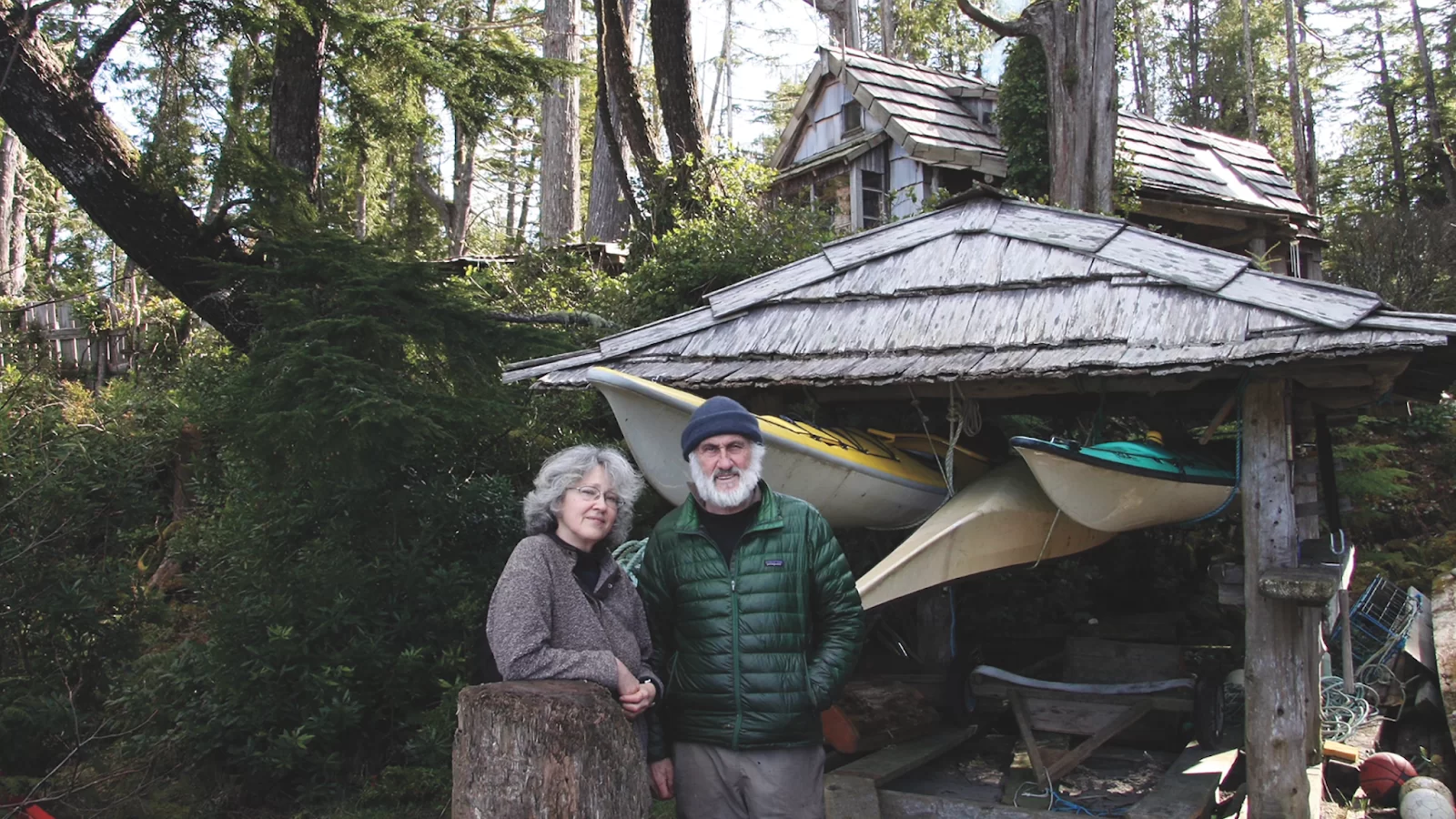When marine adventure enthusiasts John and Bea Dowd became empty-nesters 20 years ago, they were eager to make their next chapter a journey. One that involved escaping to a faraway place by the sea.
During their search for a destination they stumbled upon an abandoned cabin on a small island within Clayoquot Sound, British Columbia. Little did they know they would spend the next 10 years as full-time caretakers of the property.
Released on April 2, "Escape to Clayoquot Sound: Finding Home in a Wild Place" tells the couple’s decade-long odyssey of living off the grid on Vargas Island, nestled on a remote 10 acres within a provincial park reserve. Narrated by both Bea and John and accompanied by over 200 photos, the book pays tribute to the delicate environment of Clayoquot Sound and the magic of creating community in the wilderness.
Kinute caught up with John and Bea before the book's release to discuss their hopes, challenges and revelations behind it.

What inspired you to create this book?
John: An editor looking at memoir material I’d submitted spotted a segment on Clayoquot Sound and said, "There’s a book in this." That was the spark.
I understood the depth of what we had experienced; we’d lived a common dream in a most remarkable location, yet we had only thought of our wild coast years as a very personal, very private adventure: stolen years, in a way. (Our working title for "Escape to Clayoquot Sound" was in fact just that: "Out There—Our stolen years in Clayoquot Sound.")
We’d kept no journals but the memories remained vivid, if somewhat jumbled in our minds; a decade had intervened, adding perspective but also complicating retrieval.
Bea: That’s why it took two of us and a whole lot of photographs to get the story told.
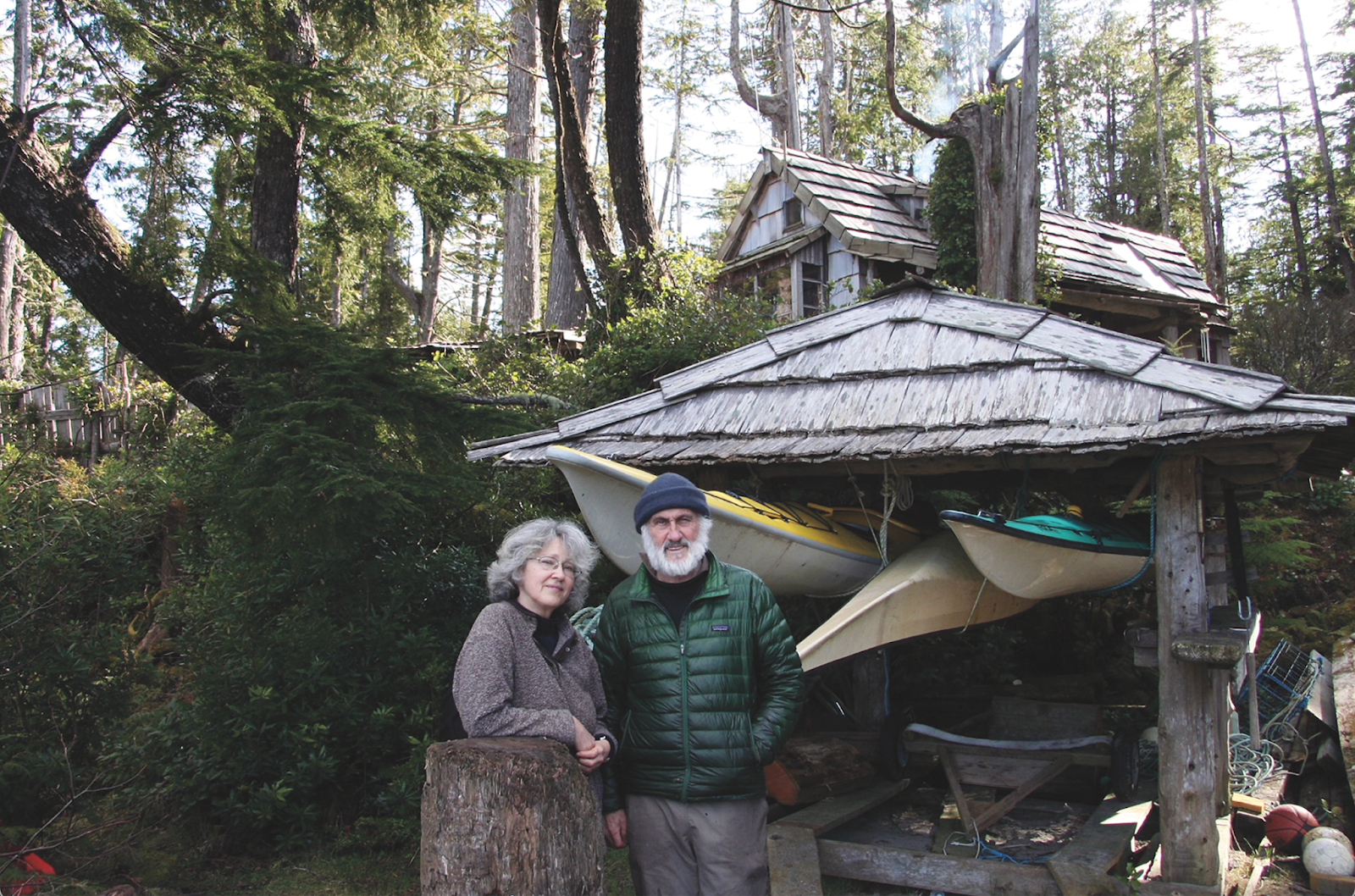
Bea and John Dowd. Photo provided by Bea and John Dowd
What made you want to live off the grid in Clayoquot Sound, and how did you come across the opportunity?
John: We’d lived off-grid before but had a longstanding wish to do so by the sea. We’d gone looking for the perfect spot in faraway places: New Zealand, Nova Scotia, the Turks, and Caicos. And then, suddenly, there it was: just at the time we felt freest to live that dream, with our children fledged and the desire fully mutual, I came across an outer coast cabin while filming a sea kayak safety video a couple of hours paddle out from Tofino. It was deserted, begging to be lived in.
Bea: John showed me photos and I was smitten. It didn’t take us long to track down the owner and make the move across from Vancouver.
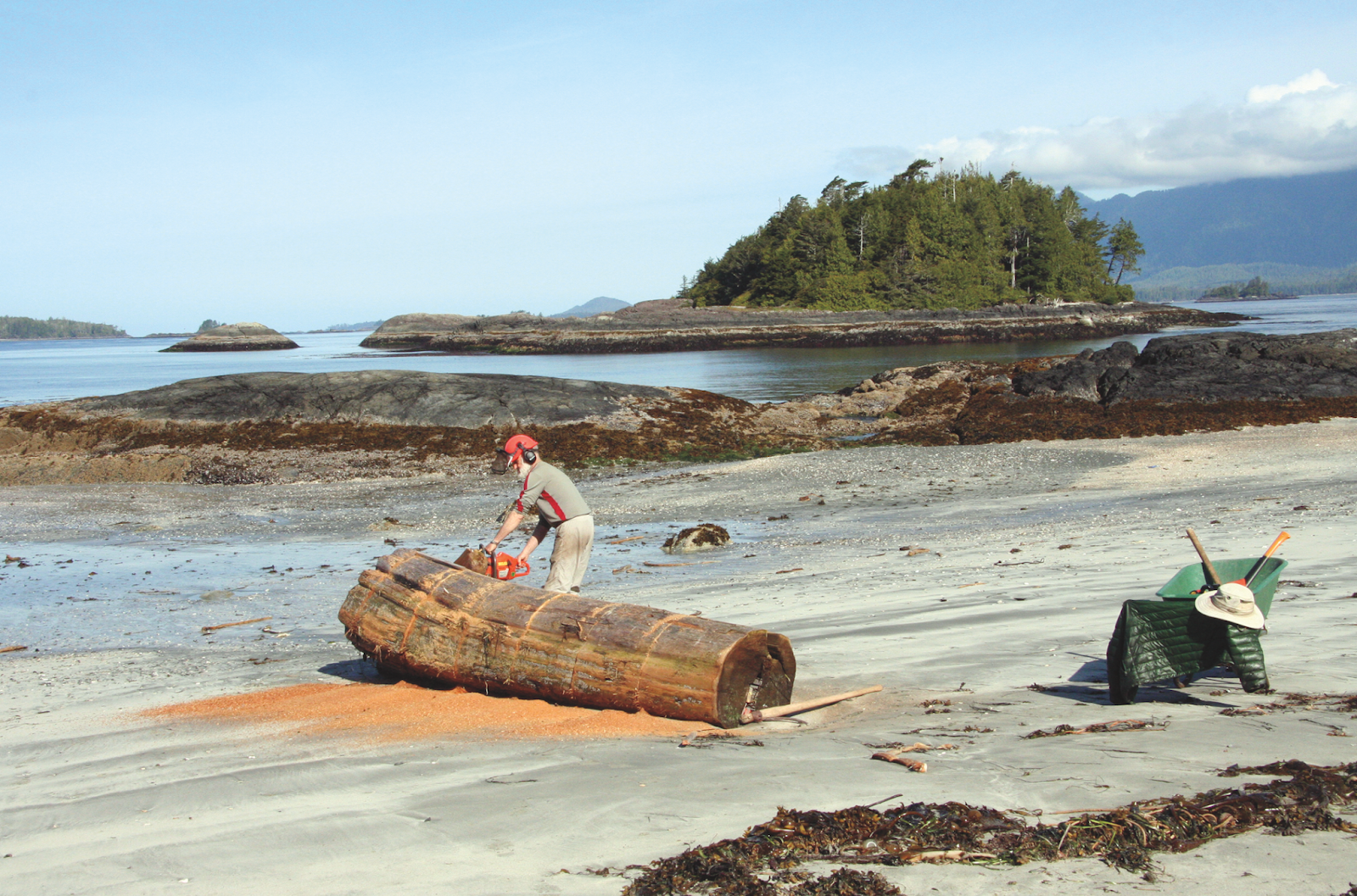
Making use of a good shake log. Photo provided by Bea and John Dowd
How long did you live on Vargas Island?
Bea: A little shy of 10 years. By Tofino standards, that’s only a notch above "transient." Some of the folks living along the inlets have been there since hippie days.
What is a memorable encounter you had with wildlife?
John: We had ongoing relations with the resident pair of ravens. We fed them fish innards and mice whacked in our mousetraps. As a special treat we would occasionally throw in a marshmallow, which they developed a taste for. I had warned a school party camped on the beach about the ravens’ special tastes, so they hid their own bag of Jumbos deep inside a kayak, beyond the foot pedals. The big raven, whom we called Ibrahim, however, had watched them do it and soon hopped inside, dragging out the bag. After a triumphant pass over the camp, he settled on a high branch where, holding the bag against the bark, he pecked a hole just the right size and ate the treats one by one.
Over the years real trust developed between us, the two resident couples. They’d bring their chicks over to our workshop roof for babysitting, confident we’d keep them safe from eagles. We called four loud CAWS if anything was amiss, and they’d turn up right away.
Bea: Though the island was free of cougars and bears, wolves were a real issue. We had repeat encounters with a succession of packs, and one particular loner, given to watching us and our pets quietly from a distance.
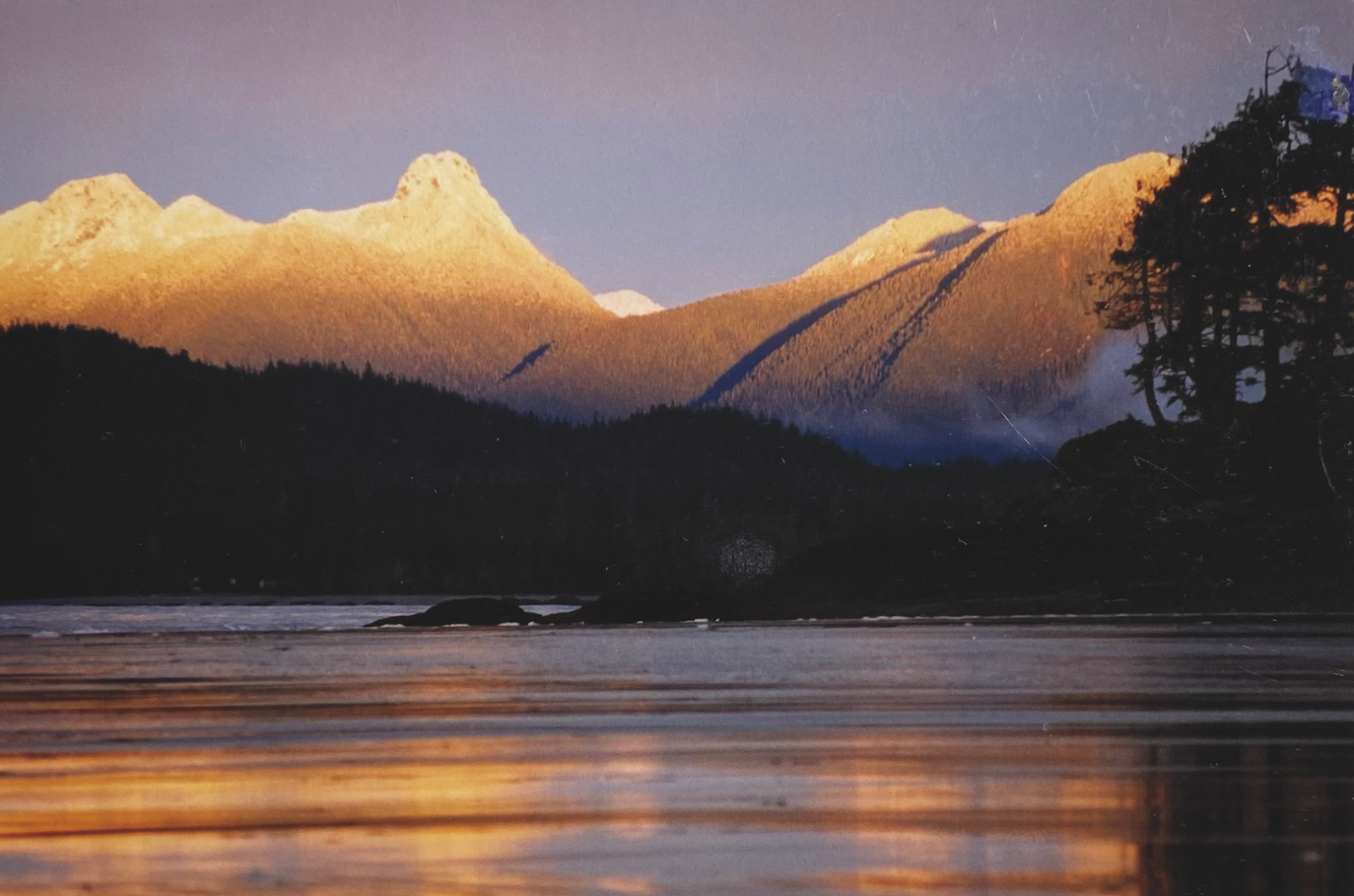
Strathcona watershed in December. Photo provided by Bea and John Dowd
Your book is described as a "duet, if at times a duel," written in both of your voices. How did you navigate the process of co-writing?
Bea: Something became clear from the outset; we tended to recall the facts in hilariously different ways. What to do? John put me in charge of piecing together a detailed timeline and story arc from our correspondence, photo records, and house notes. That worked, but we soon butted heads over what to include and what to skip. We chose to specialize: he in the general storytelling, and me in local history, our neighbors in the Sound, and things such as earthquake facts and figures.
John’s passion is for writing, mine is for the edit and research process. So, of course, I meddled—and occasionally drew heavy flack when I tried to beat him to a description, depriving him of the pleasure. Sometimes, only sometimes, he let me get away with it.
In the end I got the foreword, the postscript, the notes and the acknowledgements and he got most of the narrative, peppered with a few stories from my perspective.
Duel or not, we’re pleased with the book we have. We laugh at the funny bits and still tear up at the sad ones. It was, as someone commented, deeply felt.
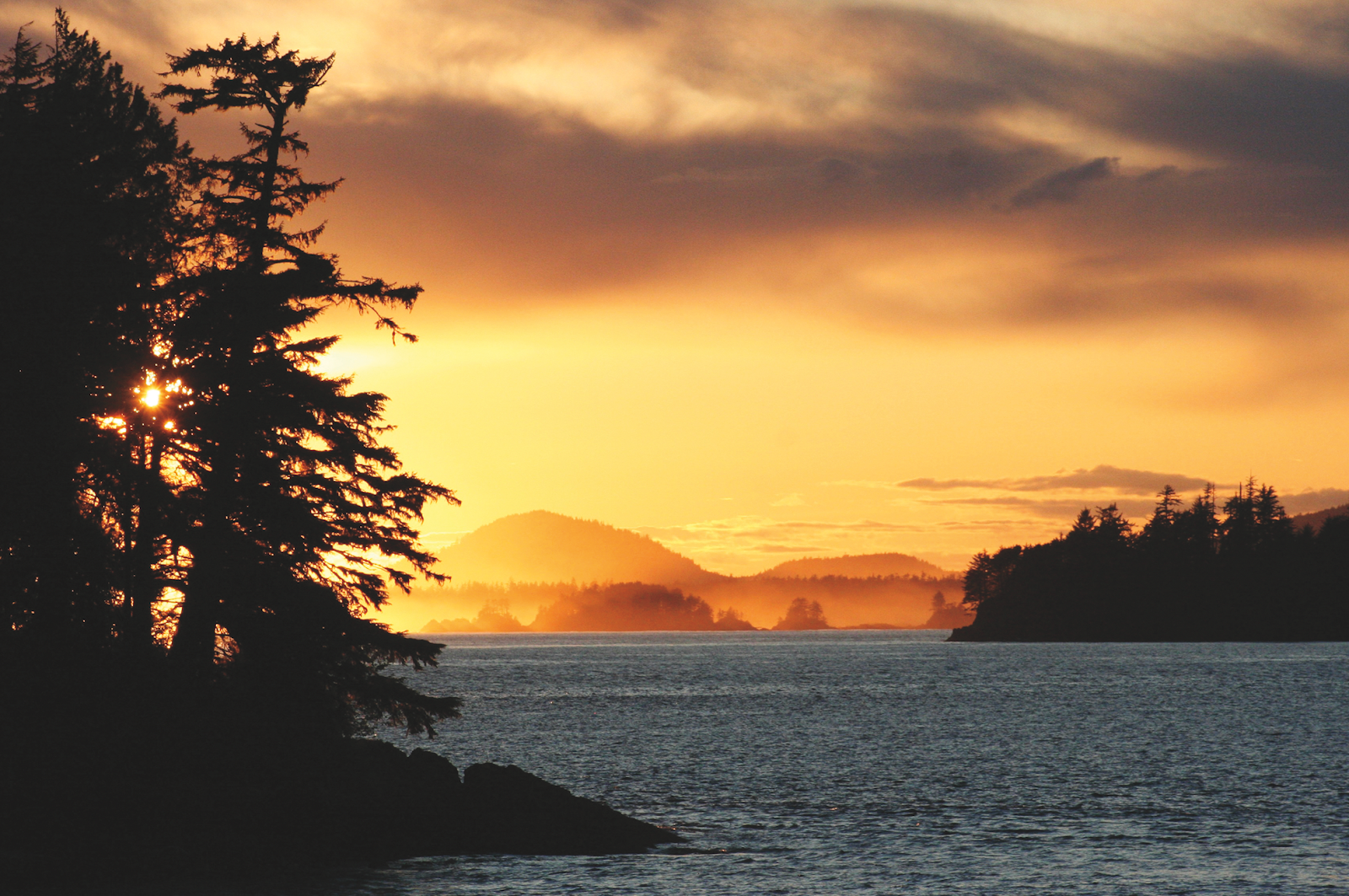
South Rocks, Brabant Channel, Clayoquot Sound. Photo provided by Bea and John Dowd
What role did your background and expertise play in influencing your approach to living in such a remote place?
John: We had 15 years’ experience living off-grid in a mountain cabin near Vancouver while our children were small. We also had plenty of sea experience. Both came together to make life work on Vargas.
Bea: Our island life was not what I’d call remote. It was certainly a step removed from normal living, and dramatically exposed to sea and weather conditions.
Your book touches on the theme of creating community in the wilderness. How did you manage this? What role did community play in your experience?
Bea: The community was there all along, but in summer only. The rest of the year we had the beach mostly to ourselves. Come May and June, however, joyous waves of kayakers turned up, and there began a great parade of sportfishing and whale-watching boats just offshore.
The kayakers were our people of course, and our steady presence, year-in and year-out, gave them all a bit of a homing spot, as well as, on occasion, a refuge or source of help. One particular school group helped us with a project each year, be it bringing up firewood from the beach or clearing a path toward high ground for a tsunami escape. For a time, we provided food storage for another group, and we liaised with Parks over wolf sightings and campsite maintenance. There were meals shared at our house, meals shared on the beach, stories told by driftwood fires or, in the off-season, by our crackling woodstove. Our dog Lolita spent much of the summer on the beach, shepherding people or stealing their Frisbees.
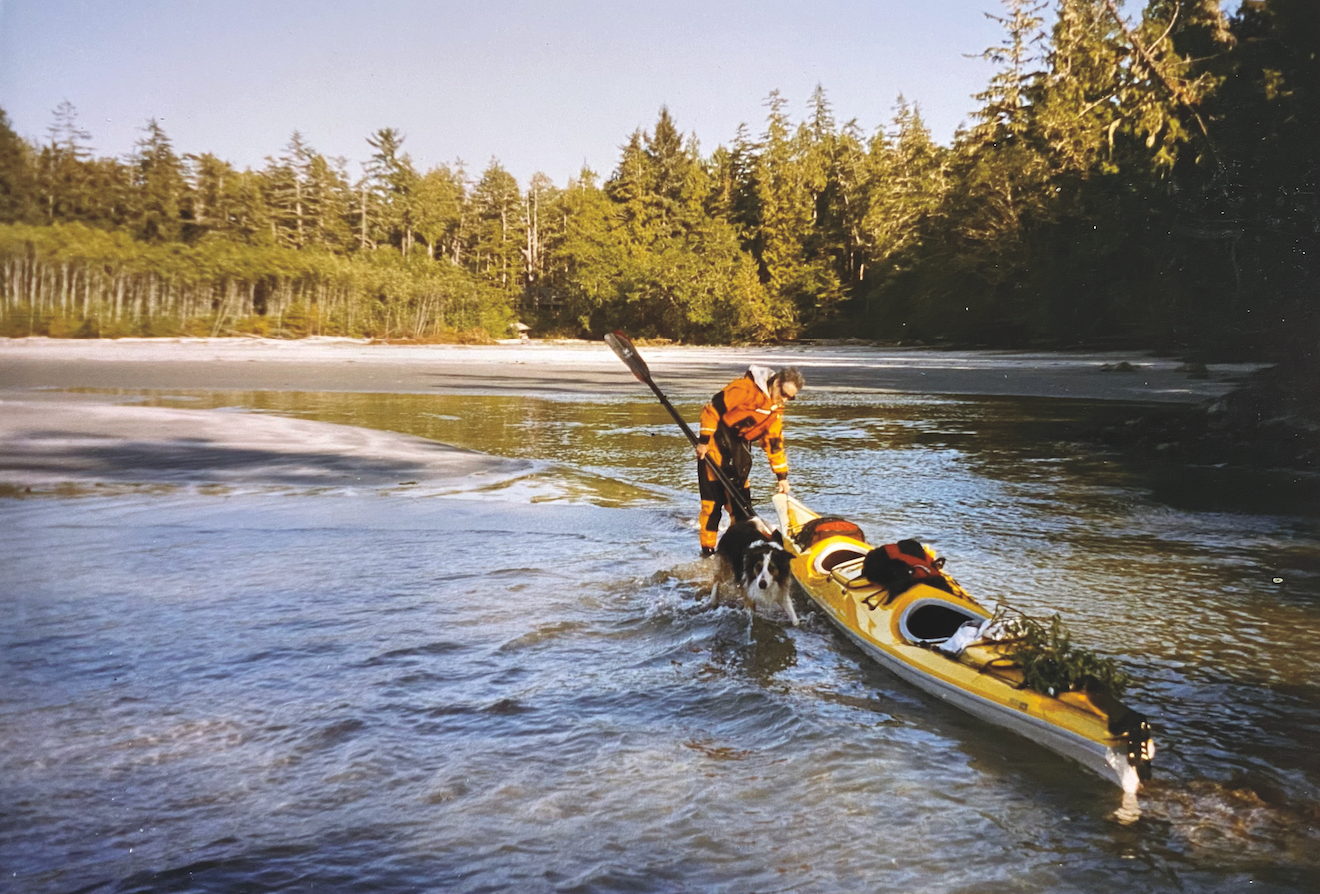
An early trip with their dog, Lolita. Photo provided by Bea and John Dowd
With over 200 photos throughout the book, how did you balance the roles of caretakers and photographers?
John: No conflict there. We just had a camera with us on our daily rounds along the beaches or surrounding woods.
I was most interested in the wacky color shifts of sea and sky for my paintings. I need beauty around me, and Vargas took it to a new level. Bea tended to look to human interest and the detail of pools and patterns, but she too had her eye on the sea and sky. How could one not in such a setting? She showed much greater dedication than me and, as a result, most of the photos in the book are hers.
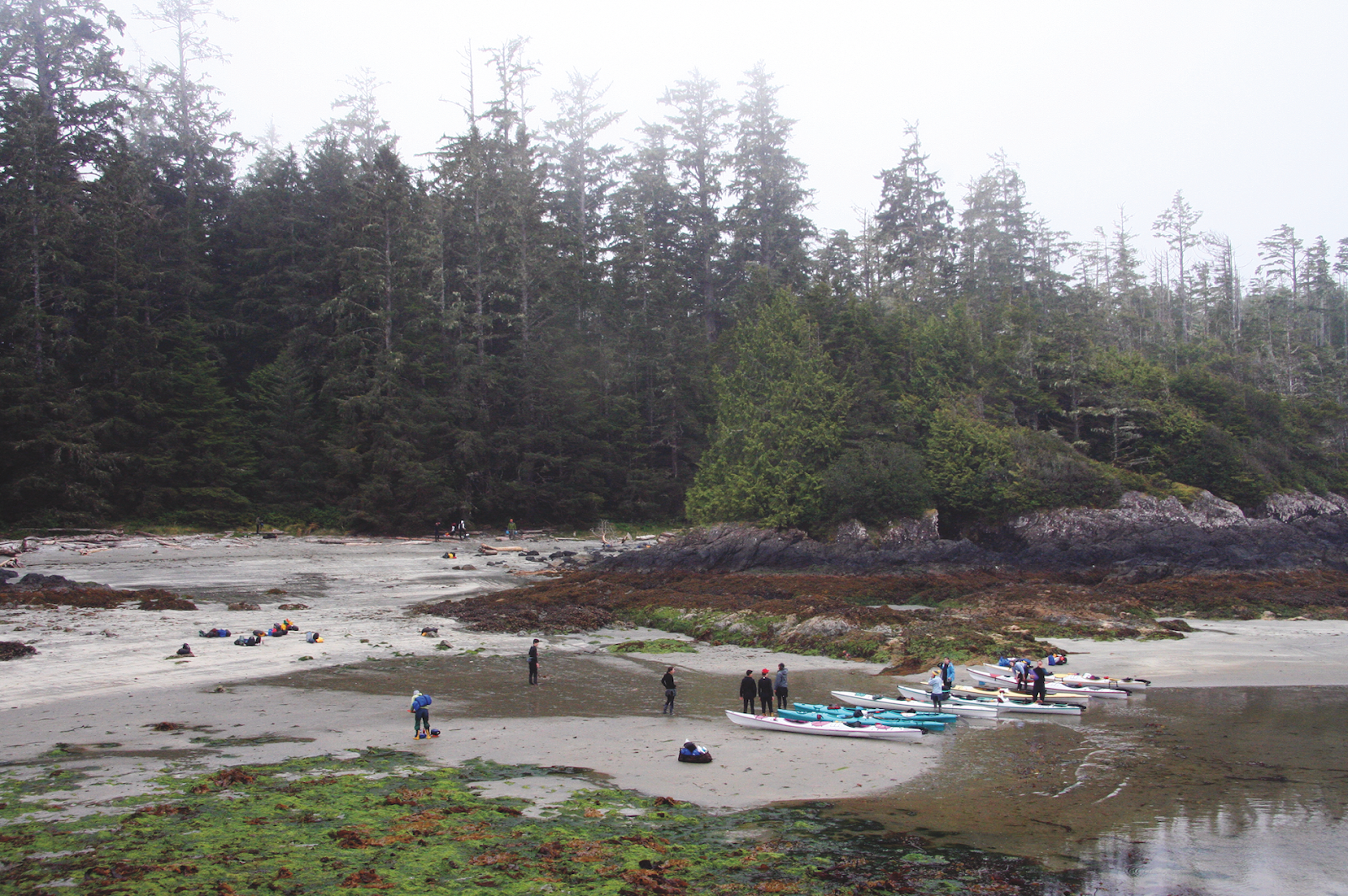
School group at Hidden Beach. Photo provided by Bea and John Dowd
What challenges did you face in capturing the essence of Clayoquot Sound?
Bea: Clayoquot Sound is a vast and complicated place: a big swath of convoluted coastline held to a broad watershed. Its essence was conveyed by books such as "Tofino and Clayoquot Sound: A History (M. Horsfield and I. Kennedy, 2014, Harbour)" and "Chasing Clayoquot: A Wilderness Almanac (D. Pitt-Brooke, 2010, Greystone)."
Our book only attempts to capture the moods and intense rewards we found on the northwest corner of one beautiful island on the outer coast: our window to a natural world ever in flux, a small-scale paradise rich with mystery, excitement, seasonal companionship and deeply satisfying work.
As for the island’s essence, perhaps our cameras caught it?
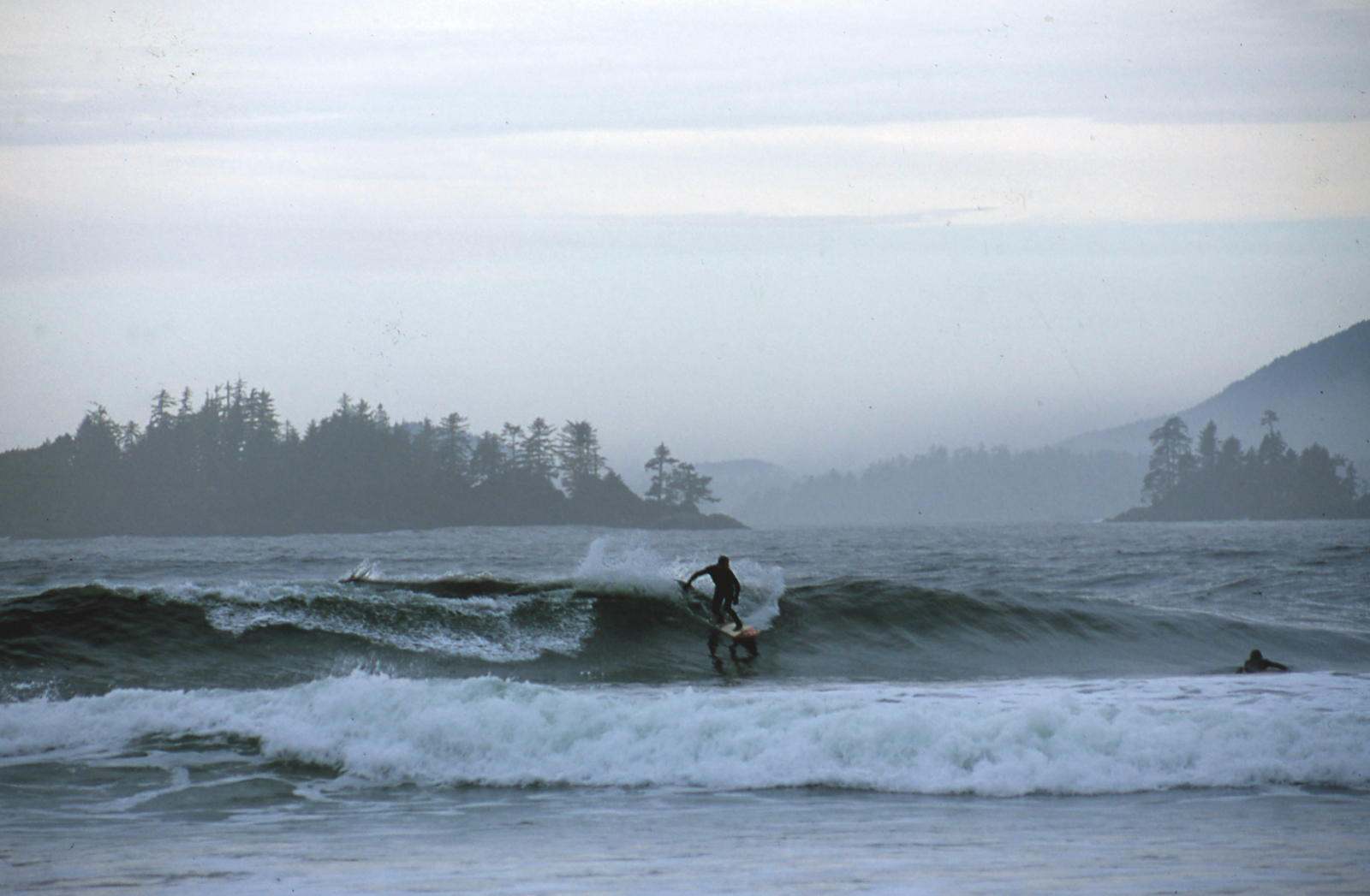
Tofino wave monkeys. Photo provided by Bea and John Dowd
What was your favorite part about creating the book?
John: For me it was the writing; telling the story.
Bea: For me it was seeing the photos again and placing them in the text. I was delighted when [our publisher] Heritage House invited our input on that. We both had fun with the captioning.
How has this adventure shaped your perspective on life?
John: Rather than reshaping my perspective, I would say it reinforced a pre-existing perspective I had on friendship, adventure, self-reliance, and a sense of home being what you make it; reliant not upon place as I had originally expected, but upon the people sharing that place with you.
Bea: Truth is, the adventure has shaped my perspective on life, but life since we left the beach had changed my perspective on our adventure also. Ten years ago, "home" moved with us to a lovely old place near the Nanaimo River, and we found fresh perspective looking back and looking forward.
Before we left the island, John said they’d have to take him away from there in a body bag, so fulfilled was he as a coastal denizen. I was keen to get closer to family again; the first grandchild had arrived by then. Not that I am averse to living on some other beach as the future unfolds; I’d just look for road access this time, and a little more elevation against the odd spoiler tsunami. More wrinkles bring more caution.
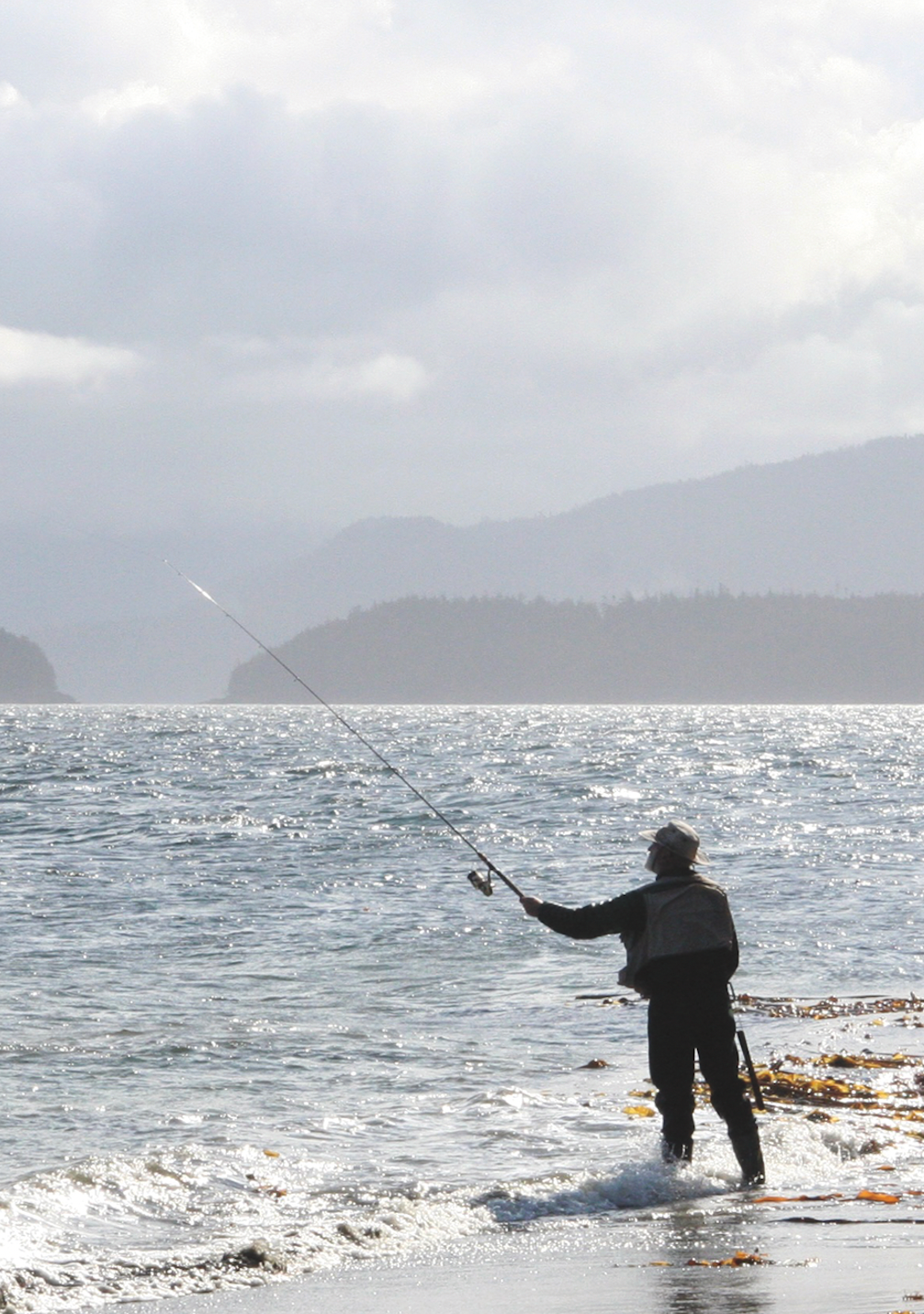
Casting for salmon off the beach. Photo provided by Bea and John Dowd
Anything else you’d like to share?
John: Our years on Vargas helped crystallize the value of time, of living for the moment. Casting for salmon off the beach became an act of contemplation so intense I blended into my surroundings—until the fish came flapping in of course, demanding action.
Bea: If all this book does is help shine a light on the visual and ecological threats still facing that spot on the map our world revolved around, I’ll be happy. It is a precious place.
Yes, Clayoquot Sound is a UNESCO Biosphere Reserve. Yes, the western half of Vargas Island is a Provincial Park Reserve. But all around it there remain logging operations, open-net fish farms, and, within visual range of our old home, the baffling threat of a copper mining development. Paradise found, paradise lost?
